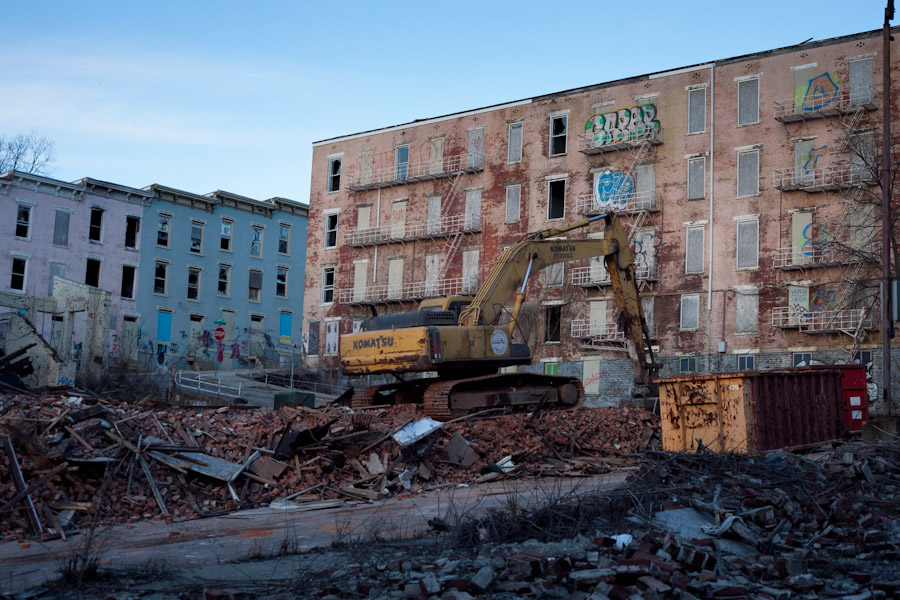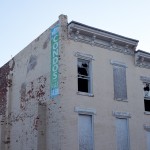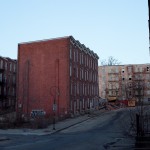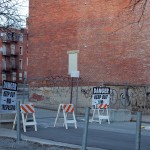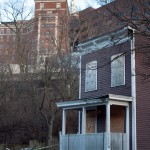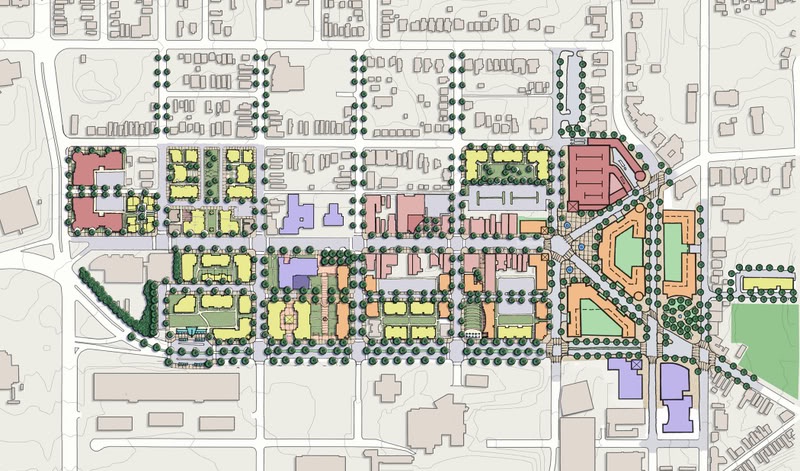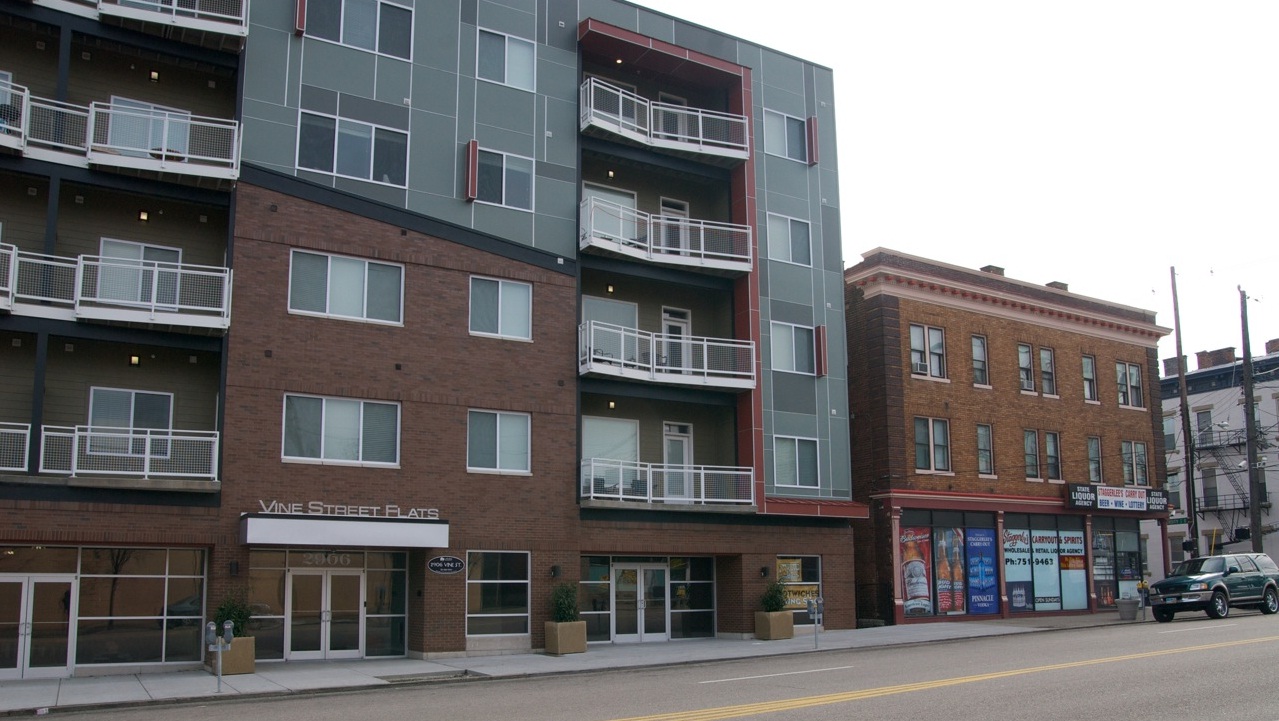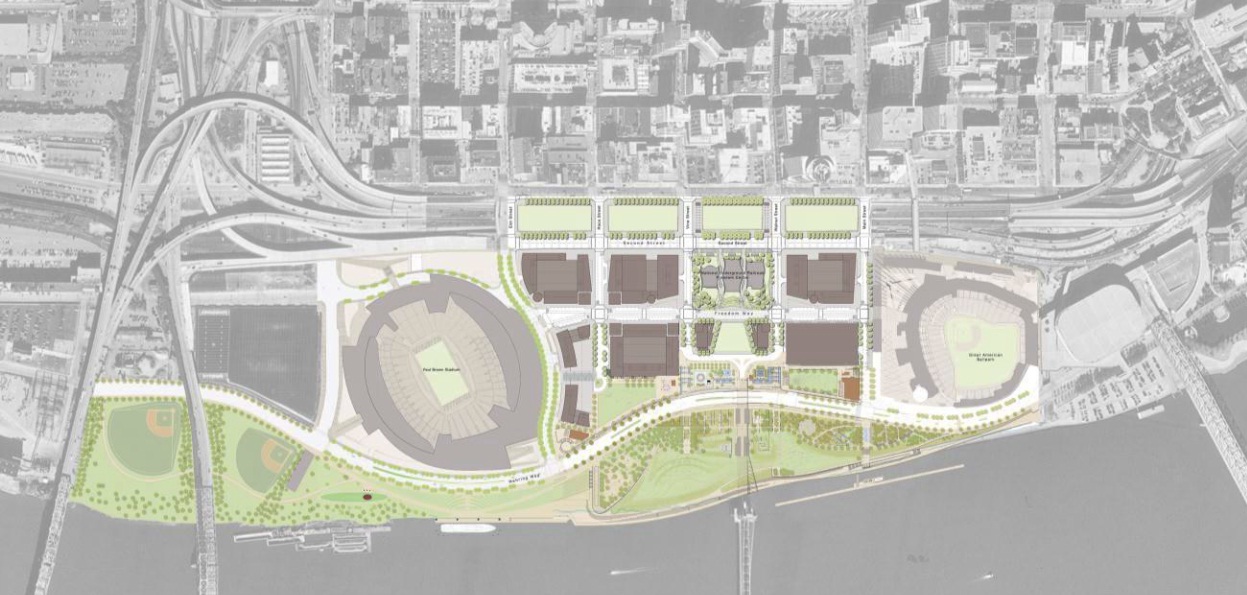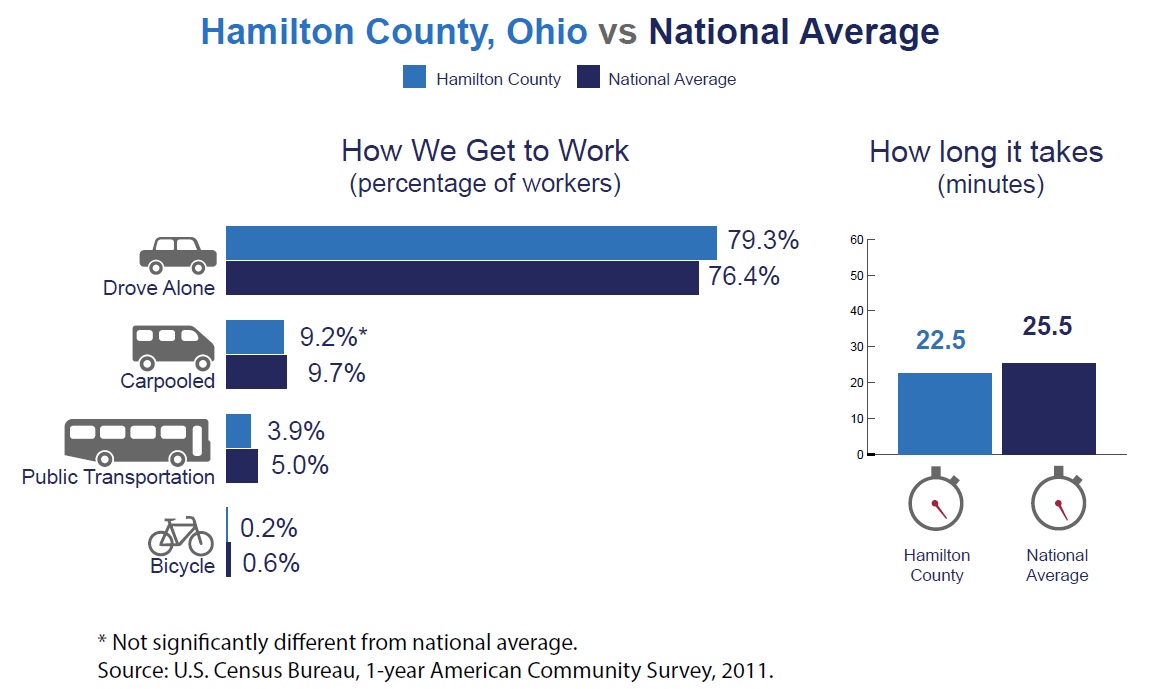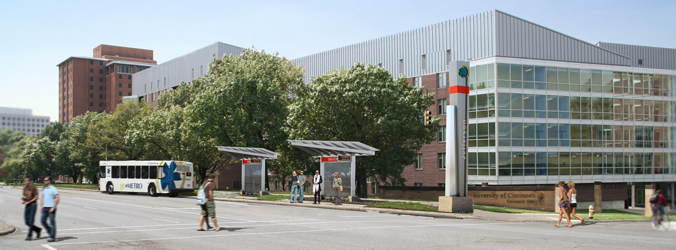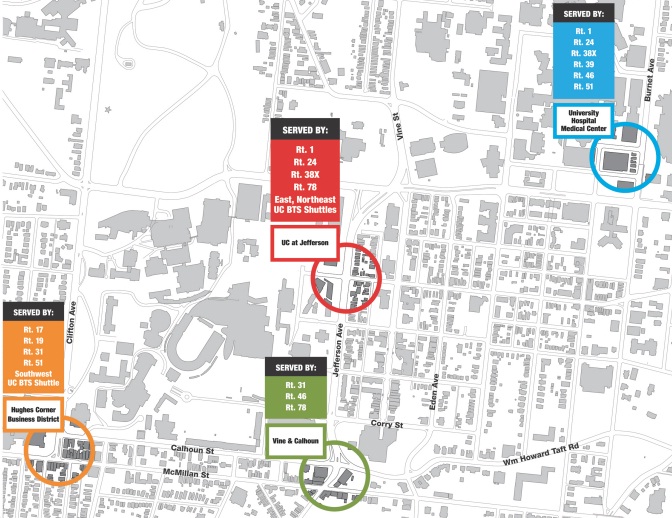After more than a decade of failed redevelopment plans demolition of the 129-year-old Glencoe-Auburn Place Row Houses began on March 19.
Known colloquially as “The Hole” for its dramatic hillside setting in historic Mt. Auburn, the multi-building complex abuts Christ Hospital and has long been eyed in its expansion plans. The complex was listed on the National Register of Historic Places in December 2003, at the request of architect Tom Hefley and developer Pauline Van der Haer.

This aerial photograph from September 2012 shows both the Christ Hospital Expansion [CENTER-LEFT] and the historic “Glencoe Hole” [MIDDLE RIGHT]. Image provided.
Van der Hear, through her development company named Dorian Development, planned to renovate the complex into 68 market-rate condominiums during the early 2000s housing bubble. The “Condos Available” sign, still visible after today’s demolition work, has been in place since at least 2004, when the project was featured prominently in Cincinnati Magazine.
The large-scale modification of the old buildings (the original apartment units all have three very small floors connected by unusually narrow staircases) and the need for a multi-deck parking garage made the creation of a viable project impossible without large subsidies from the City of Cincinnati. Since the early 2000s Van der Hear has been involved in several high profile attempts to win awards from the City.
COAST attacked the project in 2008 after it received a $300,000 grant from the city, but in 2009 Christ Hospital took advantage of the collapse of the condo market and moved to acquire the complex from Dorian Development. Van der Haer sued Christ Hospital in 2011, claiming “tortious, deliberate, intentional and malicious interference” in her development plans, but the Ohio Supreme Court and an appellate court ruled in the hospital’s favor, citing the lack of a written contract between the City and Dorian Development.
The arrival of bulldozers adds to a growing list of historic properties uptown that have faced similar fates in recent years as a surge of private investment has moved in to construct hundreds of new residences and hundreds of thousands of square feet of new commercial space.
The following 12 images were all taken by Jake Mecklenborg at the site on Tuesday, March 19 – just five days after a demolition permit had been granted.
